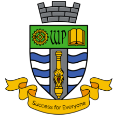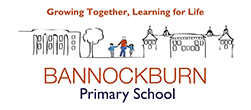Design & Technology
Design & Technology
A successful Poly Design and Technology student is someone who is creative and inquisitive, interested in the world around them and the lifecycle of the products that we interact with on a day-to-day basis. They are a problem-solver and understand the key concepts of designing for the needs of an individual and for a specific user group. They have sound knowledge of the technological advances in the world and consideration of the social and economic responsibilities that designers have in relation to these developments. The Poly Designer’s knowledge extends to the classification and properties of a variety of materials, being able to confidently define, choose and discuss appropriate materials for use in relation to their physical and working properties and the environment they could be used in. A successful Poly Design and Technology student is a strong leader and team member but is also able to work confidently as an individual to solve a design problem. They are perceptive and can identify the potential problems, difficulties, and inconveniences in the world around them and consider how they could design products and systems to make the world a more accessible place to all. The mind of a Poly Design and Technology student is both practical and scientific with a good understanding of mathematics. Excellent written communication skills and values, as well as an understanding of the importance of constructive criticism and reflection.
Key Stage 4
AQA GCSE Design and Technology
In the Design and Technology GCSE, students will complete several focused designs and do tasks, followed by a final major GCSE project. Students will also produce a design portfolio showing a range of research, analysis and design skills.
Students will manufacture their final GCSE design incorporating computer-aided design with smart and modern materials. Students have the opportunity to visit product manufacturers, design museums and galleries to inspire their design work.
Students will follow a iterative structure which includes researching, technical drawing, modelling, product analysis and product manufacture. The subject also offers students the opportunity to develop skills in creativity, innovation, communication, ICT, group work and independent learning. Students will:
-
Develop the skills required for engineering and product manufacturing.
-
Developing ideas, planning, designing and producing innovative products.
-
Consider how past and present design and technology affects society.
-
Recognise the moral, social, cultural and environmental issues inherent in design and technology.
-
Study inspiring designers and engineers from all cultures, societies and religions to understand their own value in the world we build.
-
Use Computer Aided Design and Computer Aided Manufacture (CAD/CAM)
All courses will involve the integrated use of ICT to support project work.
Course overview
Assessment
50% Controlled Assessment
50% examination (2hrs)
Support materials and useful links
OCR Cambridge National Engineering Design
The CamNat Engineering Design Course will encourage students to: understand and apply the fundamental principles and concepts of Engineering Design. This includes the design process, types of drawings, influences on design, and the use of Computer Aided Design (CAD). Students will develop learning and practical skills that can be applied to real-life contexts and work situations, think creatively, innovatively, analytically, logically and critically, develop independence and confidence in using skills that would be relevant to the engineering design and development sector and more widely. Students will learn to analyse problems in design terms through practical experience of solving such problems, including designing and modelling designs to meet a design brief, understanding the different stages of the iterative design process, recognising the cyclical nature of this approach, evaluating designs through product disassembly and the process of using product analysis.
Assessment
One externally assessed exam (75 mins)
Two centre-assessed units (NEA)
Support Materials & Useful Links
Department Information
Any specialist equipment required?
Fine liner pen; writing pen; pencil; ruler; sharpener; rubber; colouring pencils; USB memory stick
Enrichment opportunities
Working with designers; after-school clubs; trips to museums; provision of CAD / CAM software
Clubs or Interventions
Anytime after school, as arranged by staff
Future careers/uni courses
Architecture and Engineering are the main career paths taken after studying D&T. However, D&T is useful for many careers, particularly those requiring practical skills and confidence. Communication and problem-solving are key to most industries: industrial design; transport design; civil engineering; teaching; manufacturing; and construction are all examples of possible career routes.
Social, Moral, Social, Cultural (SMSC) and British Values
Projects used allow students to explore a variety of users. During research, students are expected to consider all the needs and wants of their client, including faith and background experiences that may affect the way that they view the world.
Ethical issues are often addressed in terms of materials and the ways that they impact the environment in their production, processing and disposal.
Further Information
If you would like to find out more about the Design and Technology curriculum, please contact Mr A Hall at: AHall@woolwichpoly.co.uk





